Pie Charts, Bar Charts and Line Graphs Worksheets
Completing Tables from Pie Charts
Year groups: 7, 8
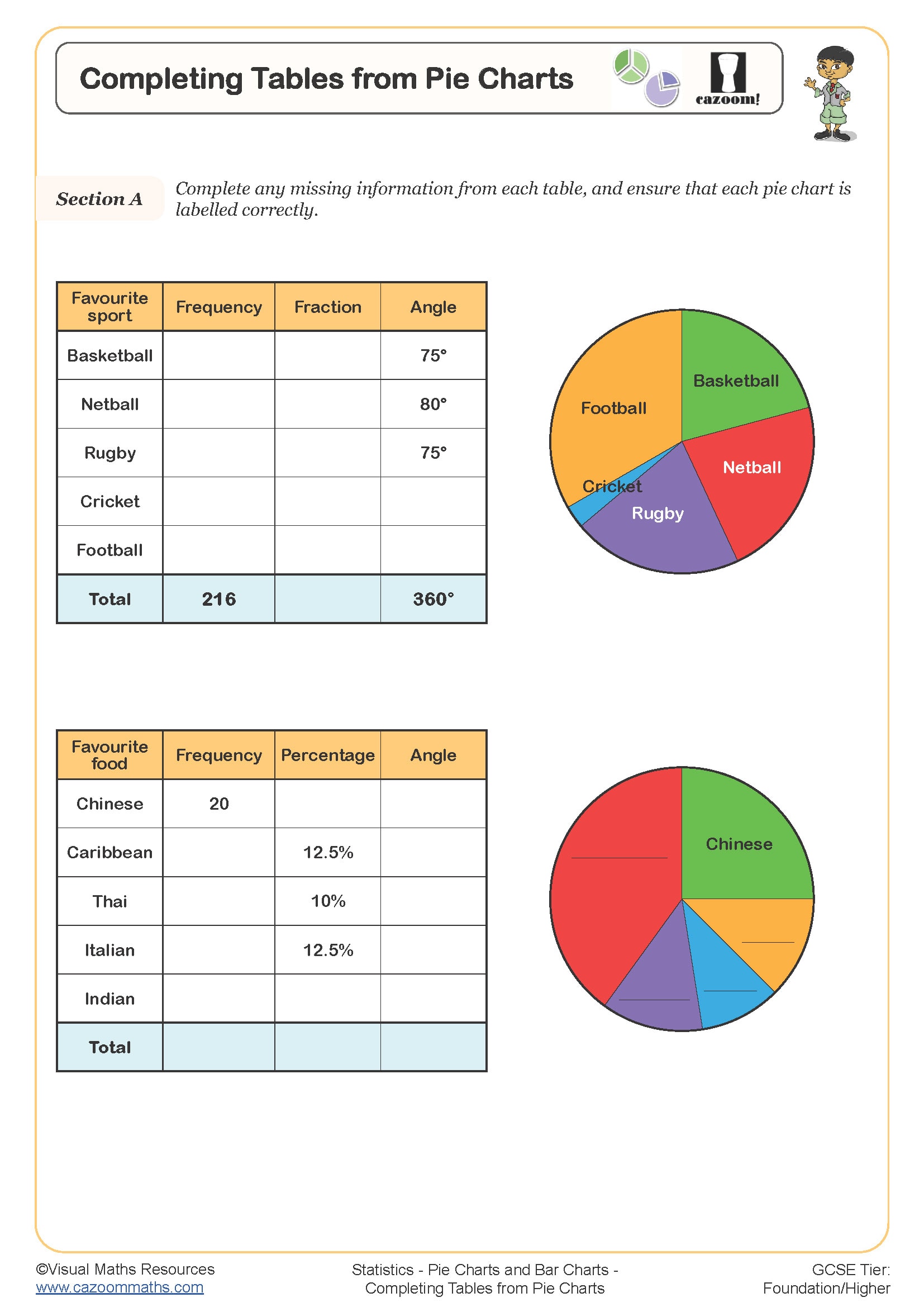
Criticising Graphs and Charts
Year groups: 7, 8

Draw Composite and Dual Bar Charts
Year groups: 7, 8
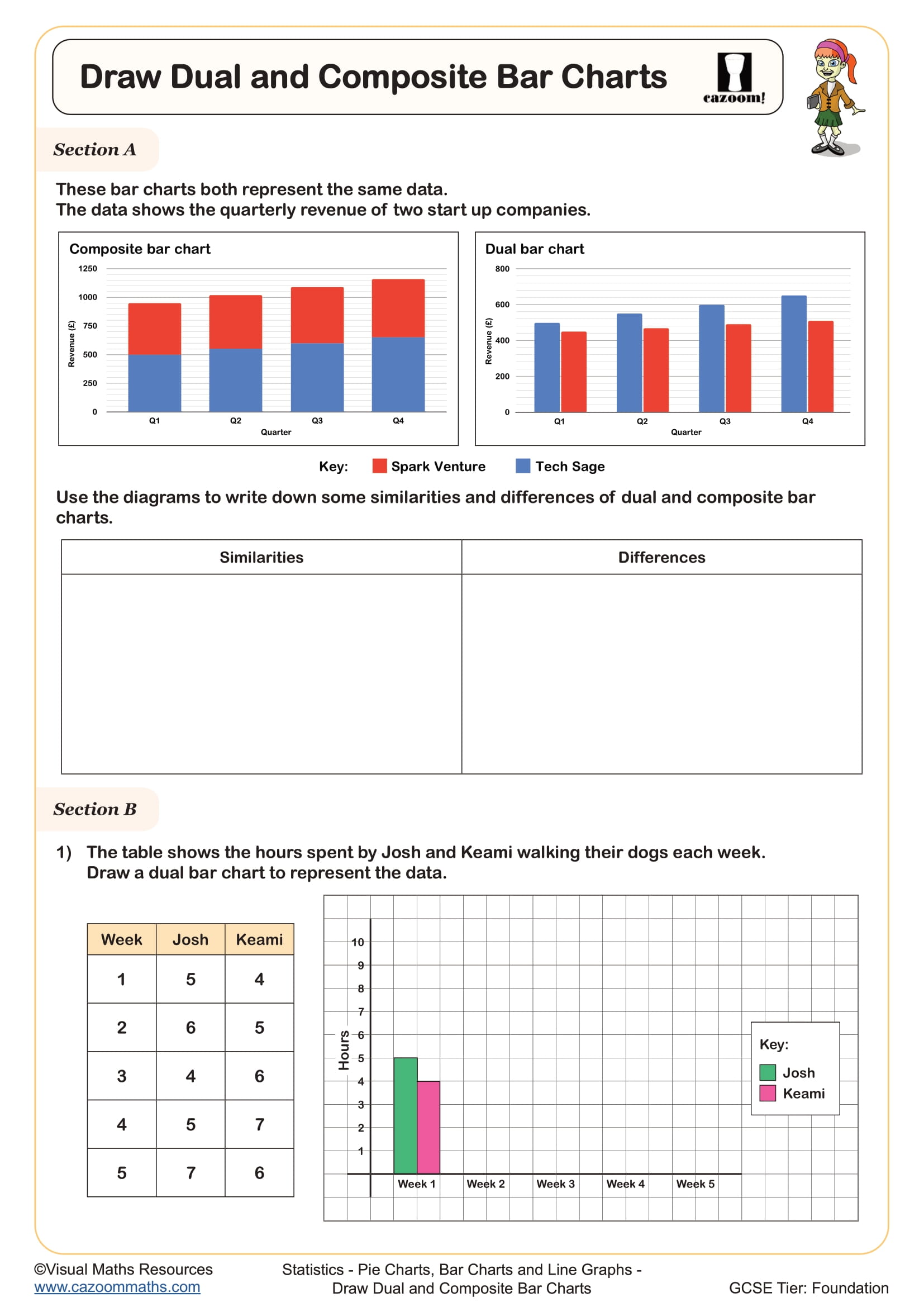
Drawing Bar Charts from Frequency Tables (A)
Year groups: 7, 8
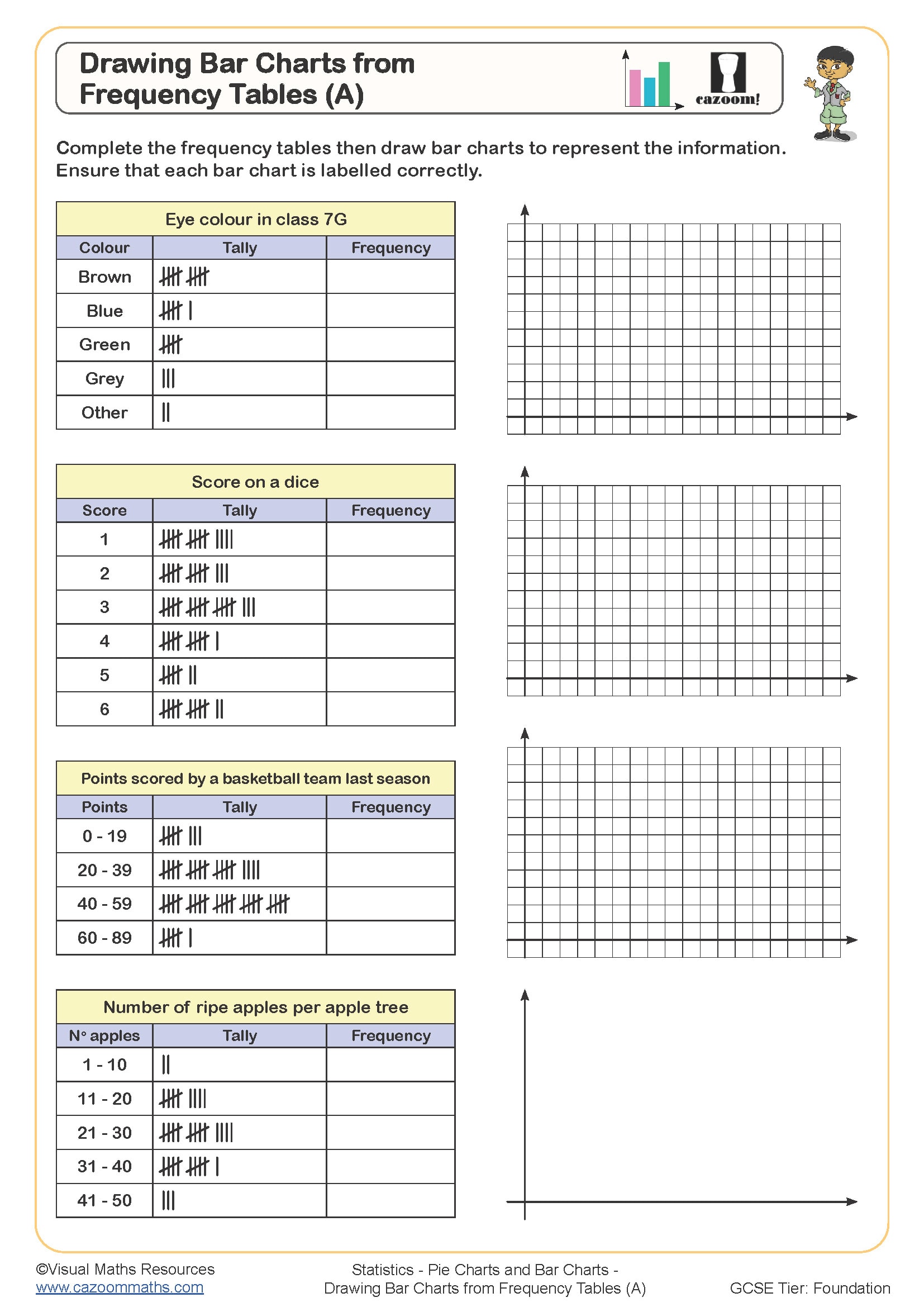
Drawing Bar Charts from Frequency Tables (B)
Year groups: 7, 8
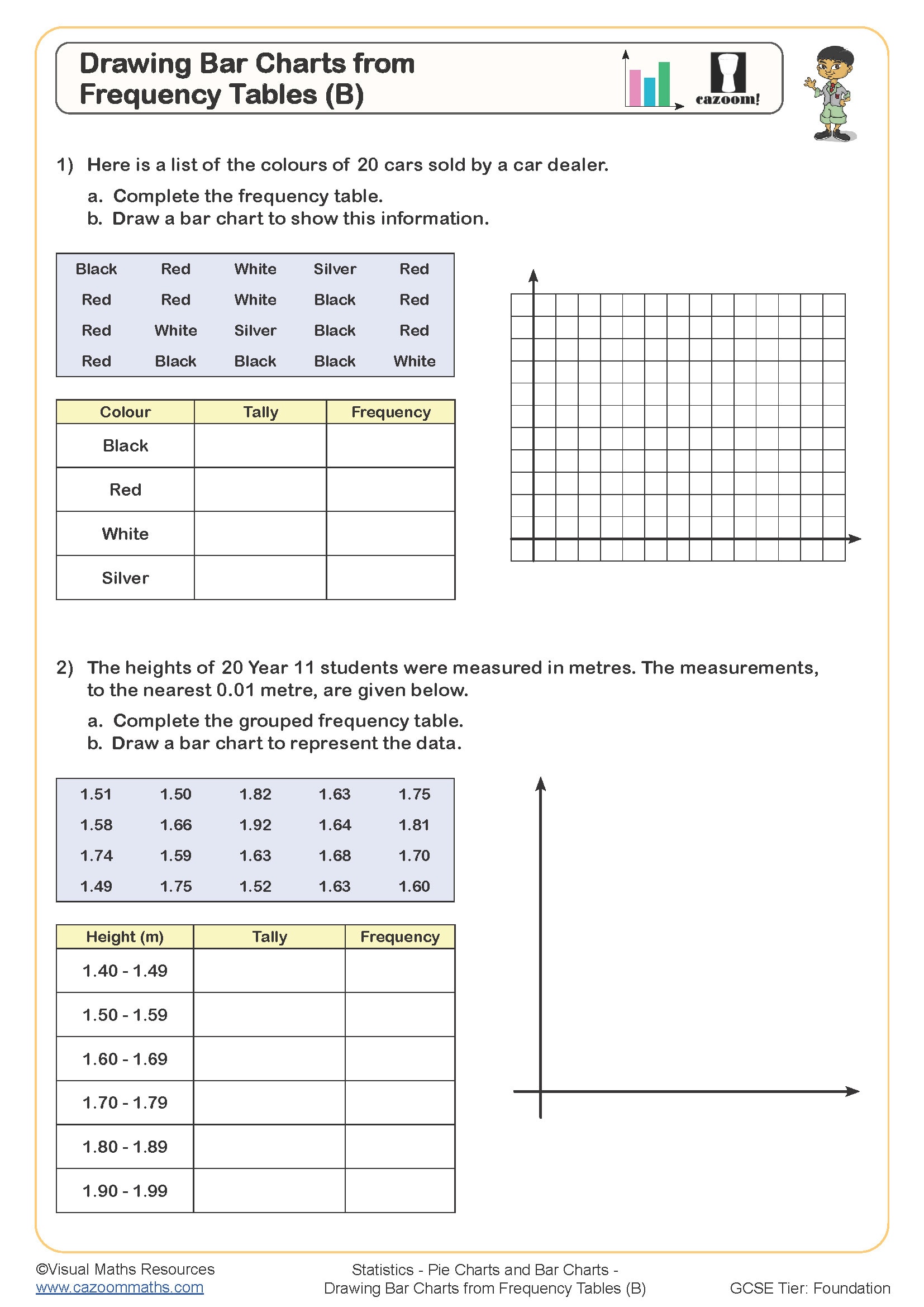
Drawing Pie Charts (A)
Year groups: 7, 8
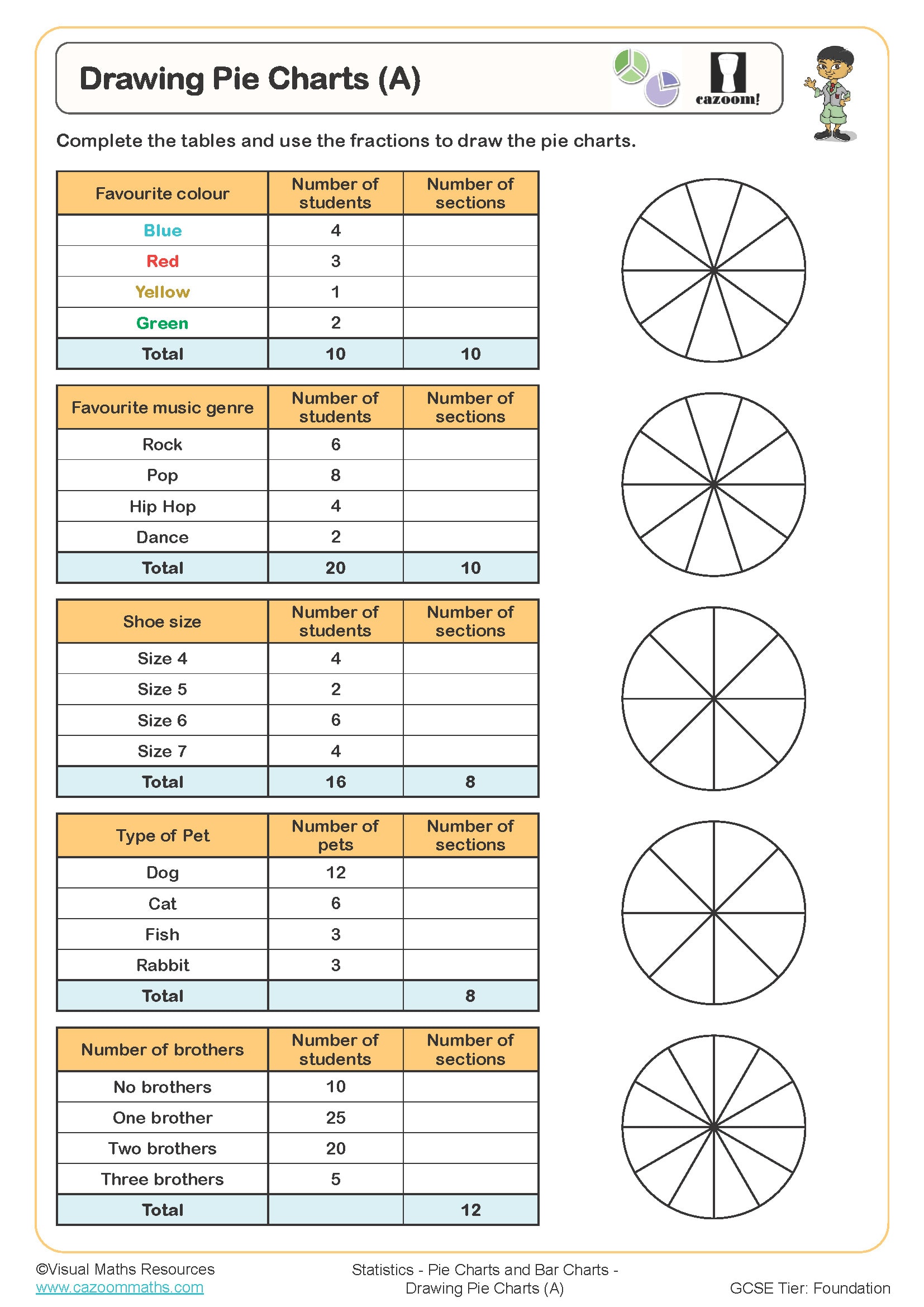
Drawing Pie Charts (B)
Year groups: 7, 8
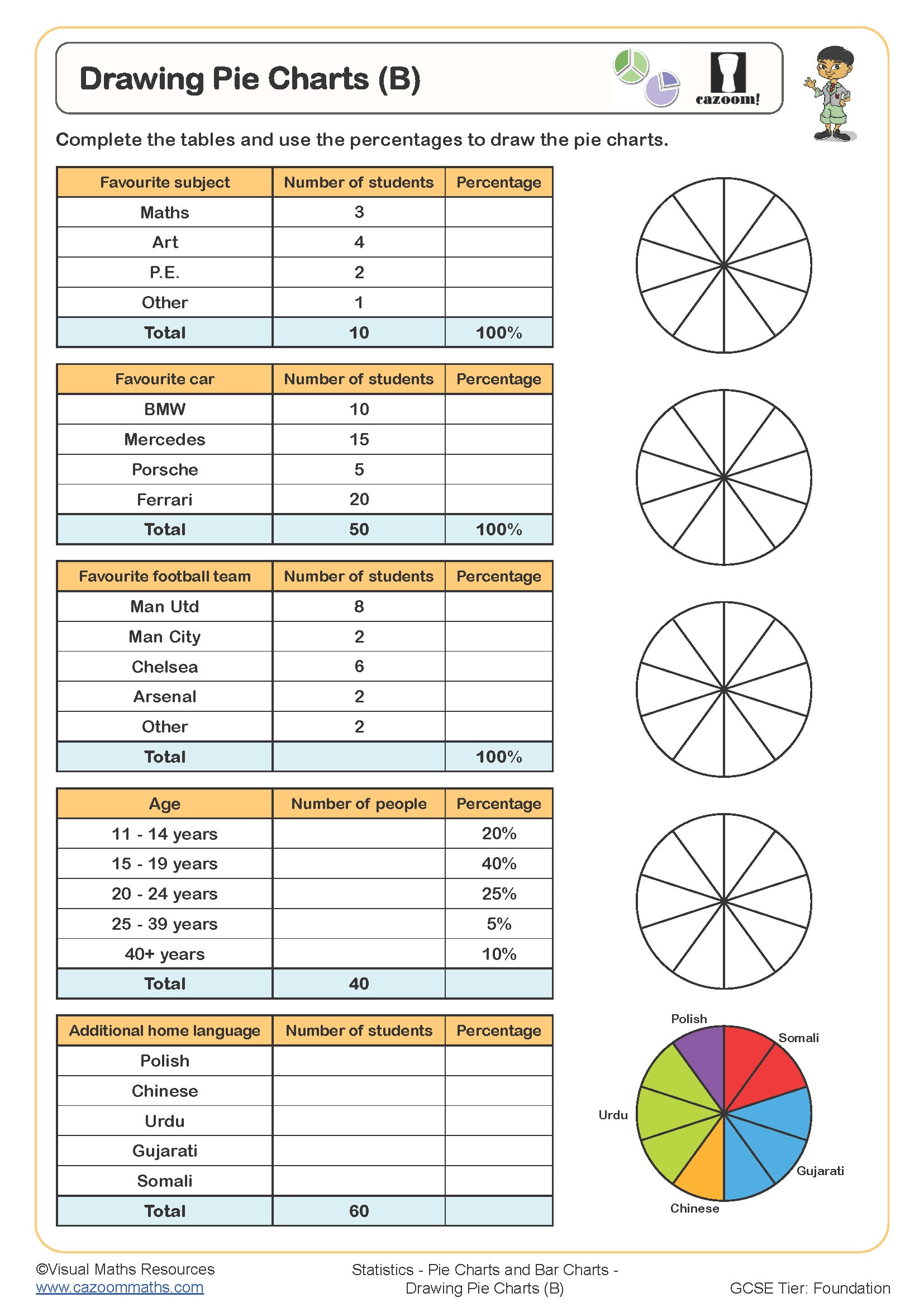
Drawing Pie Charts (C)
Year groups: 7, 8
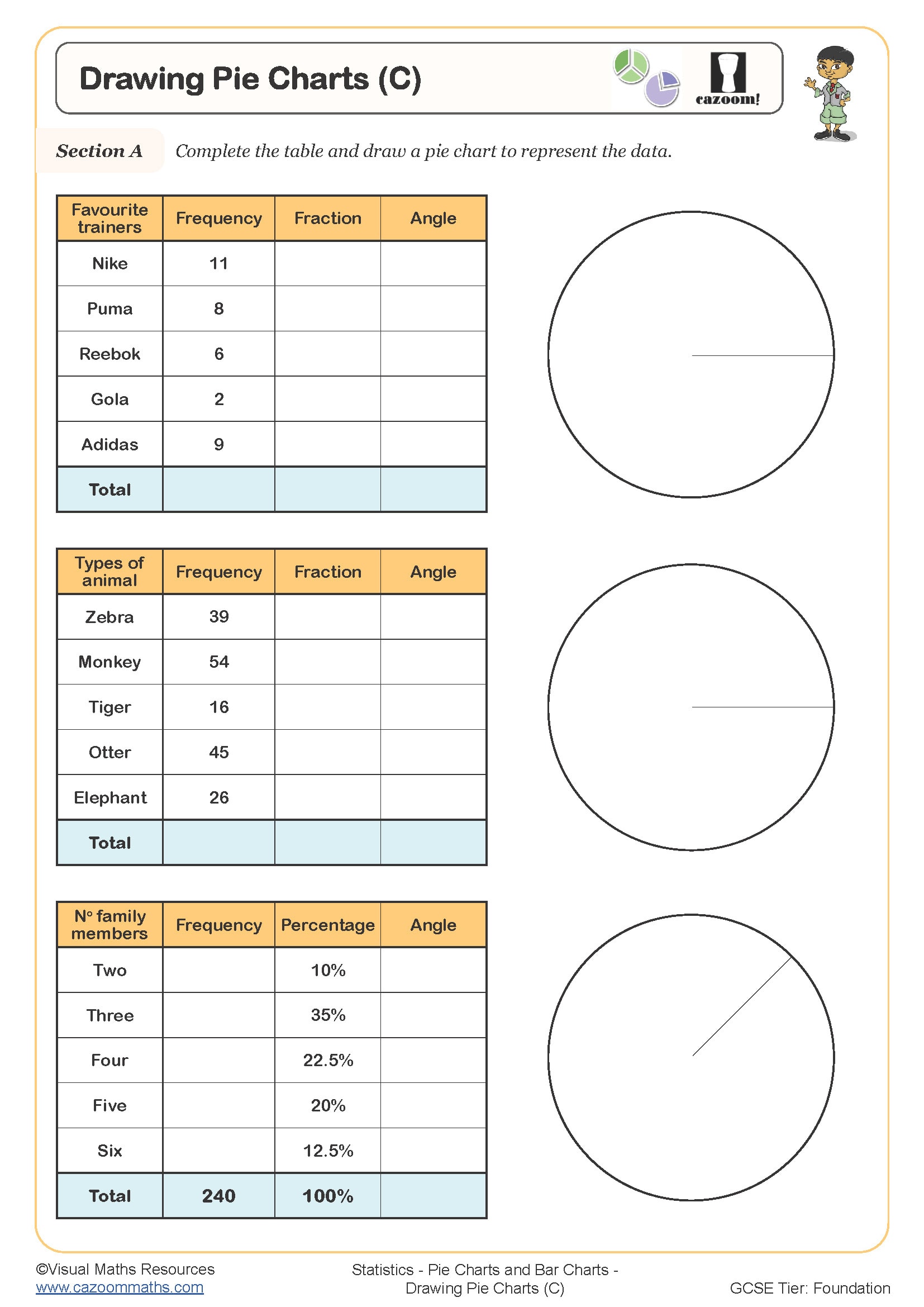
Grouped Frequency Tables
Year groups: 7, 8
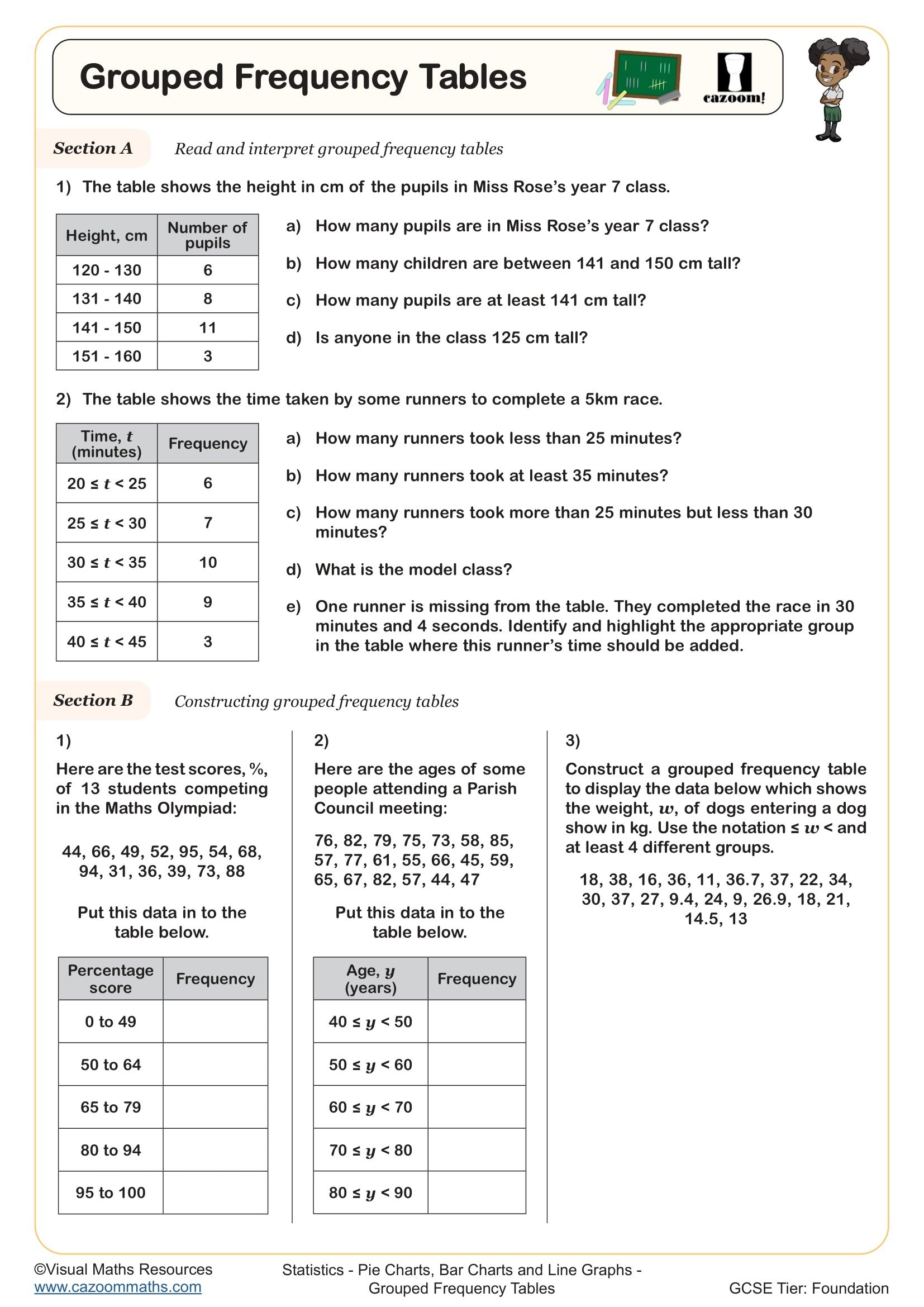
Line Graphs (A)
Year groups: 7, 8
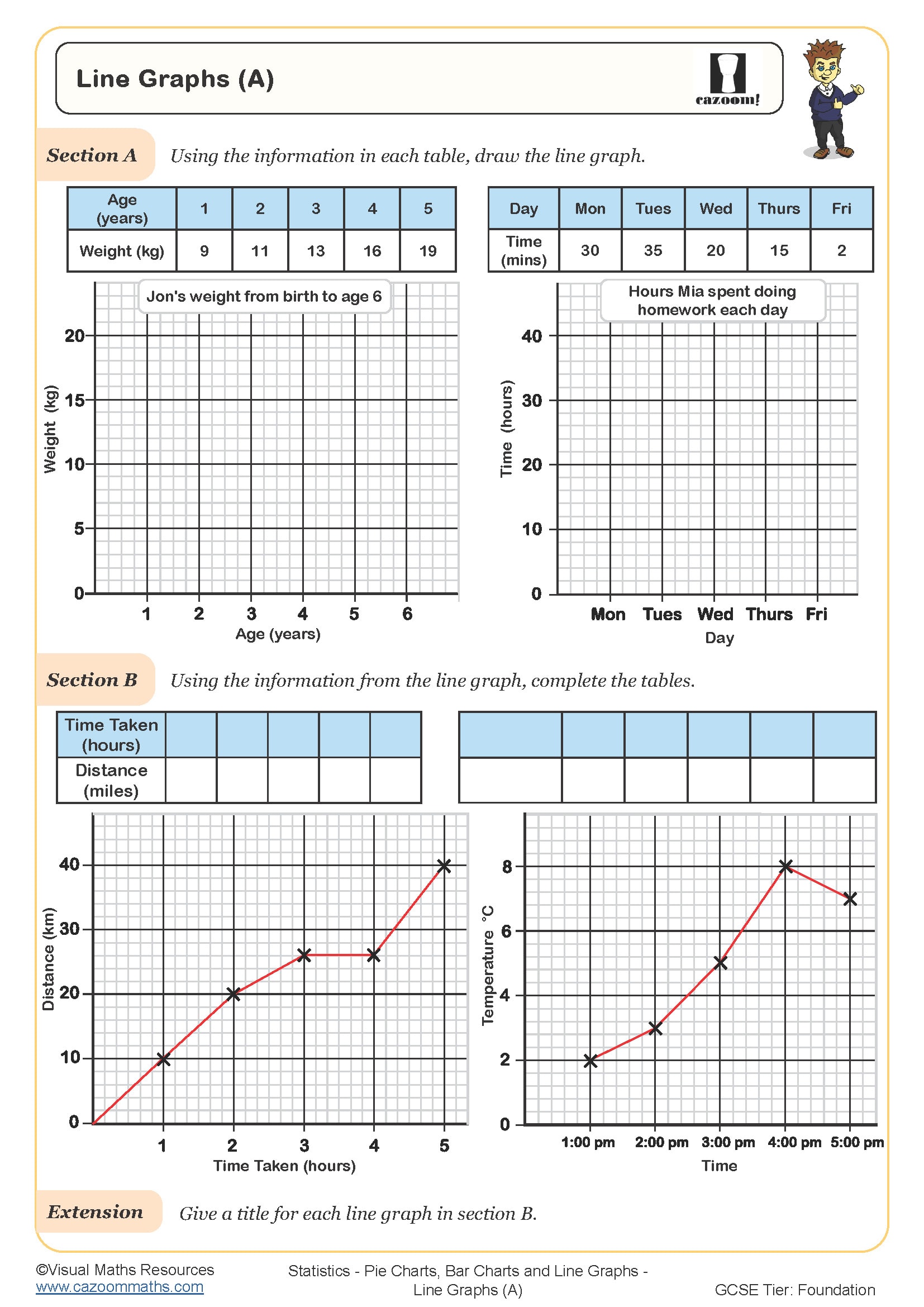
Line Graphs (B)
Year groups: 7, 8
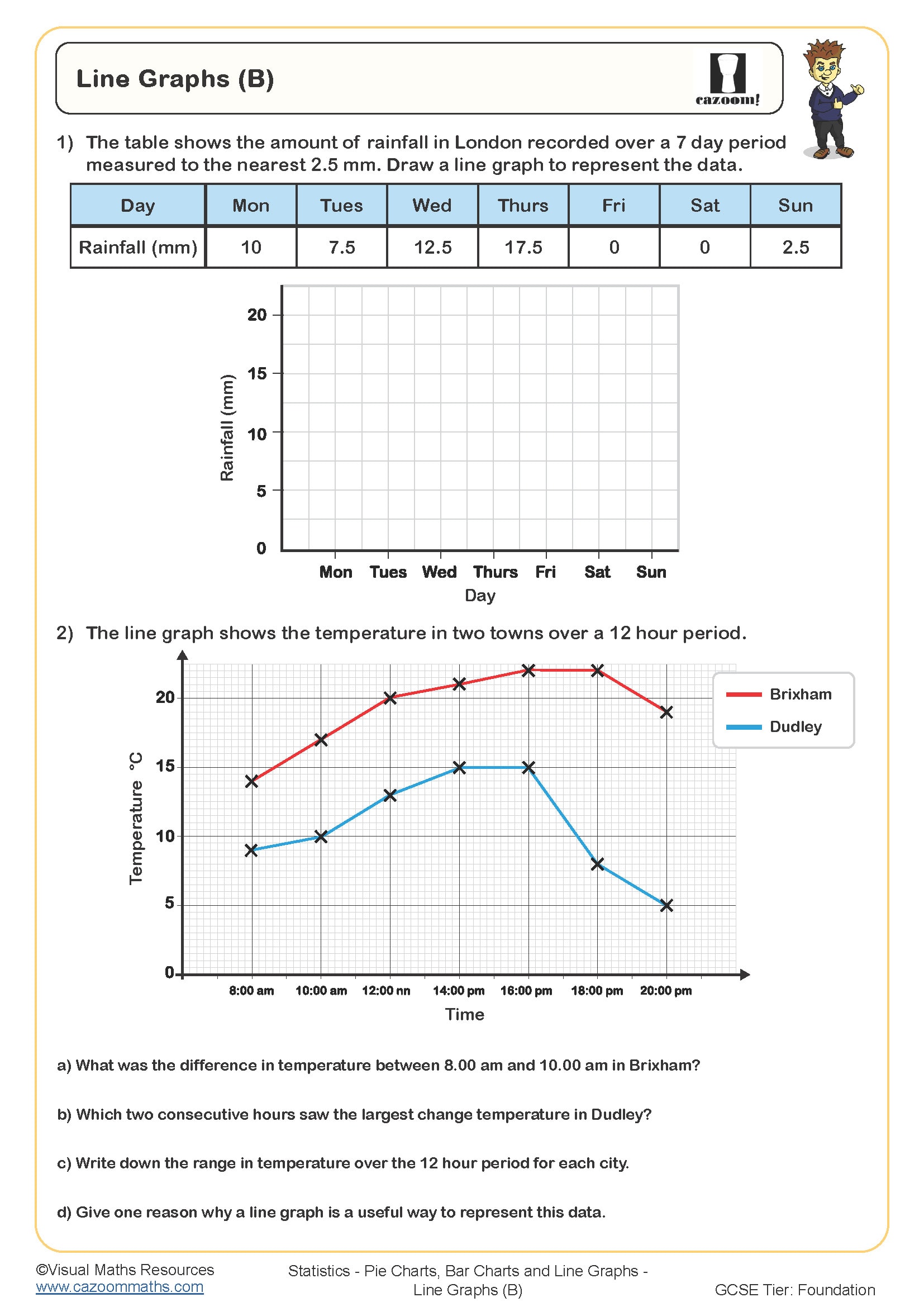
Reading Bar Charts
Year groups: 7, 8
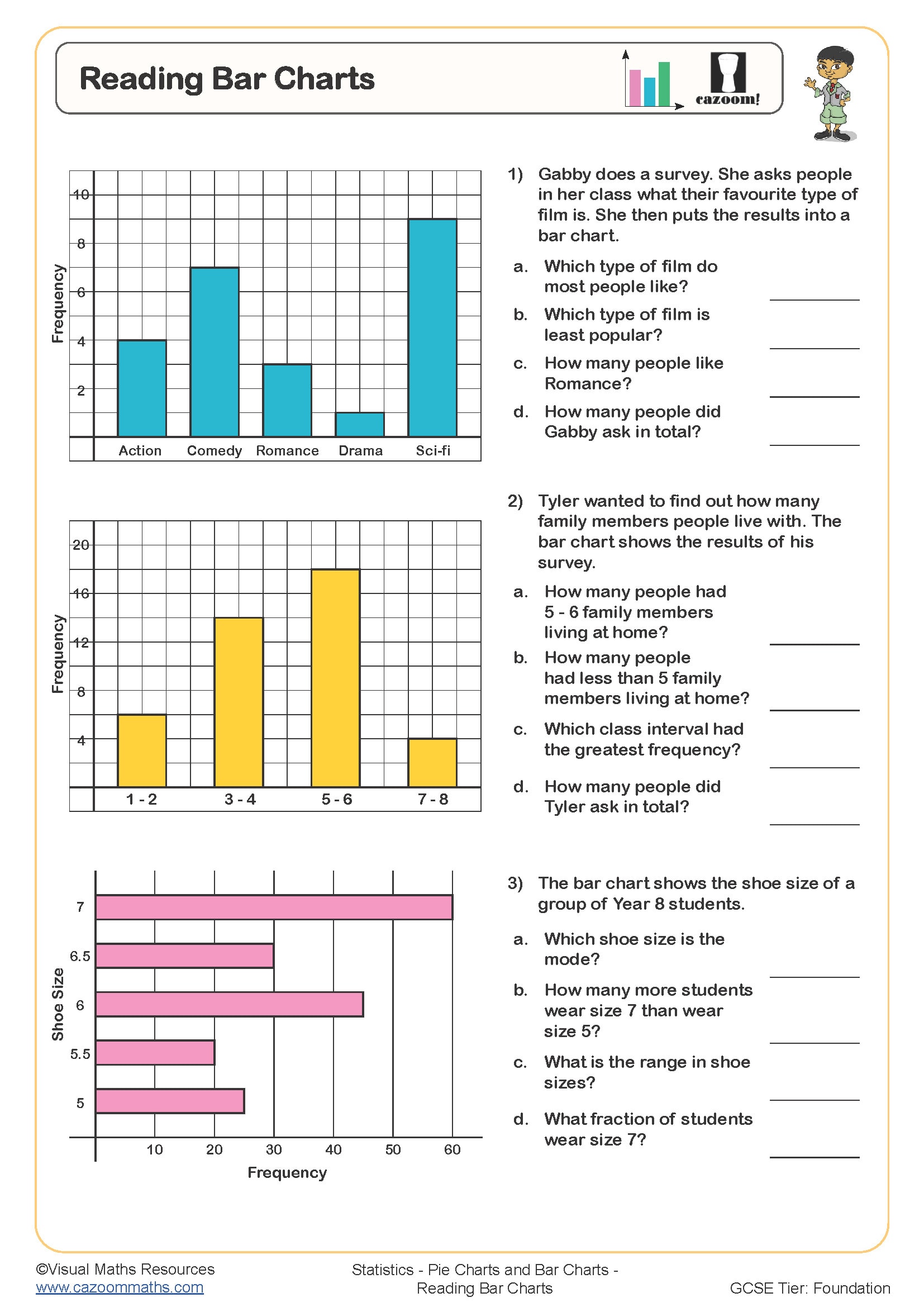
Reading Compound Bar Charts
Year groups: 7, 8
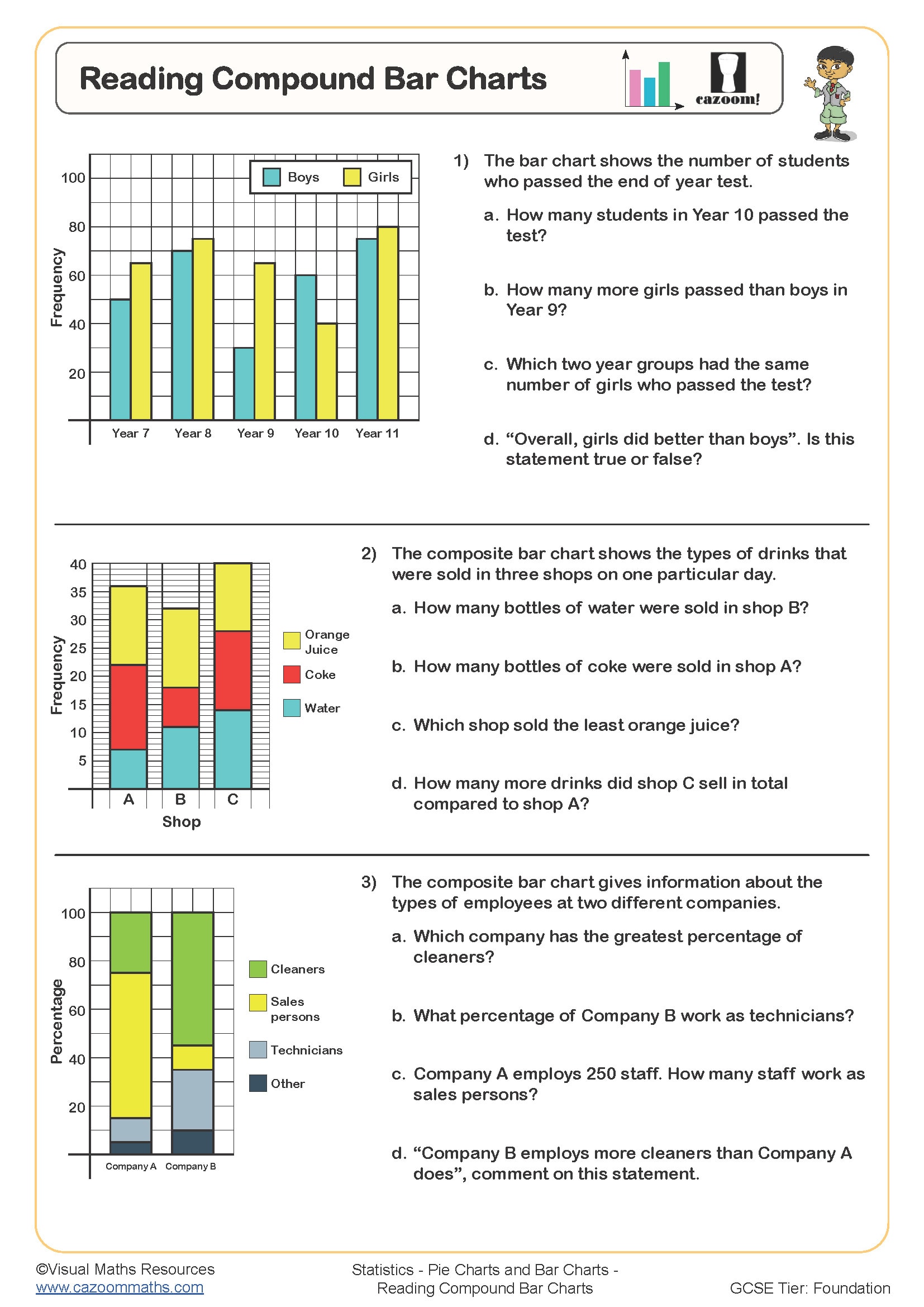
Reading Pie Charts (A)
Year groups: 7, 8
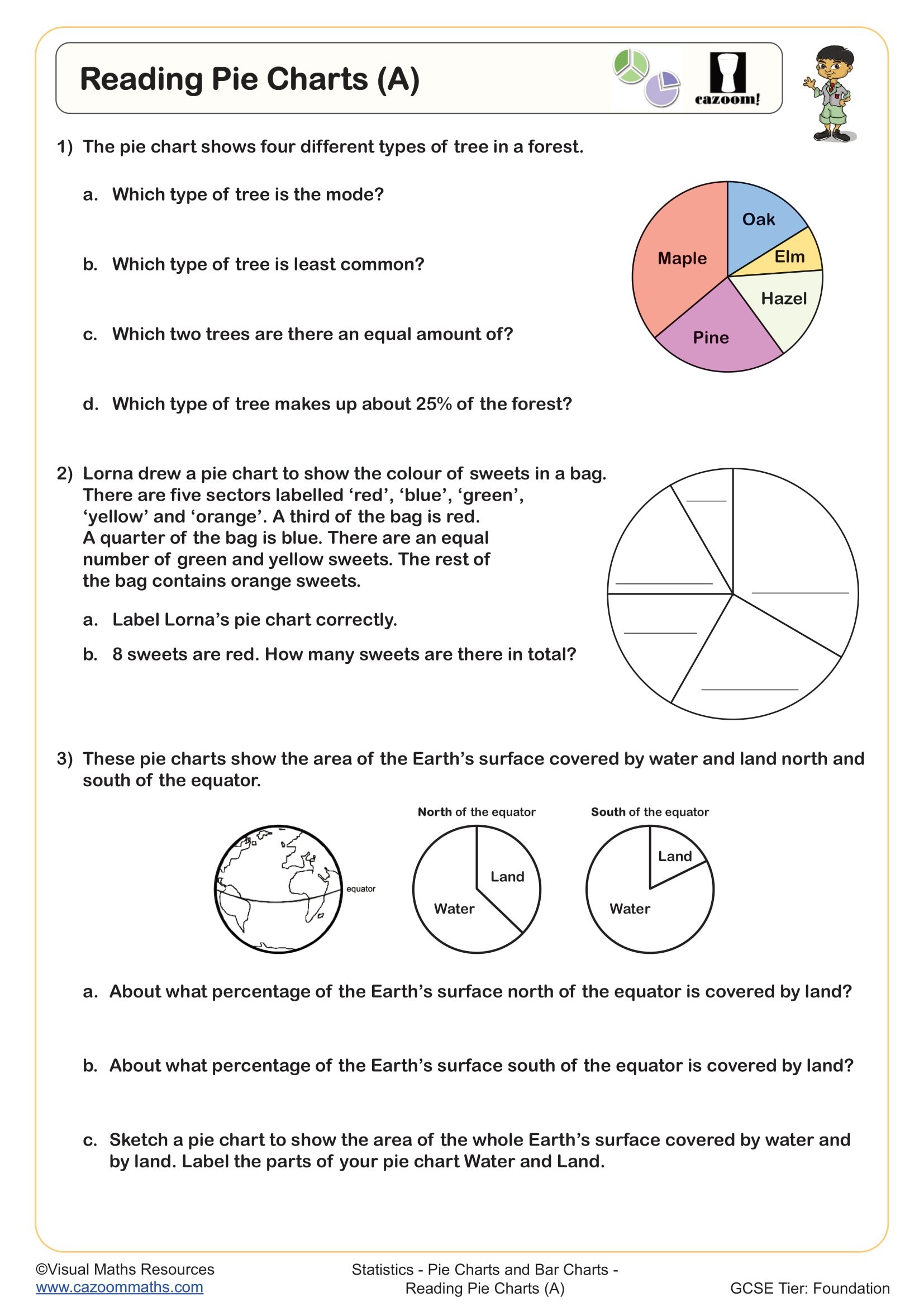
Reading Pie Charts (B)
Year groups: 7, 8
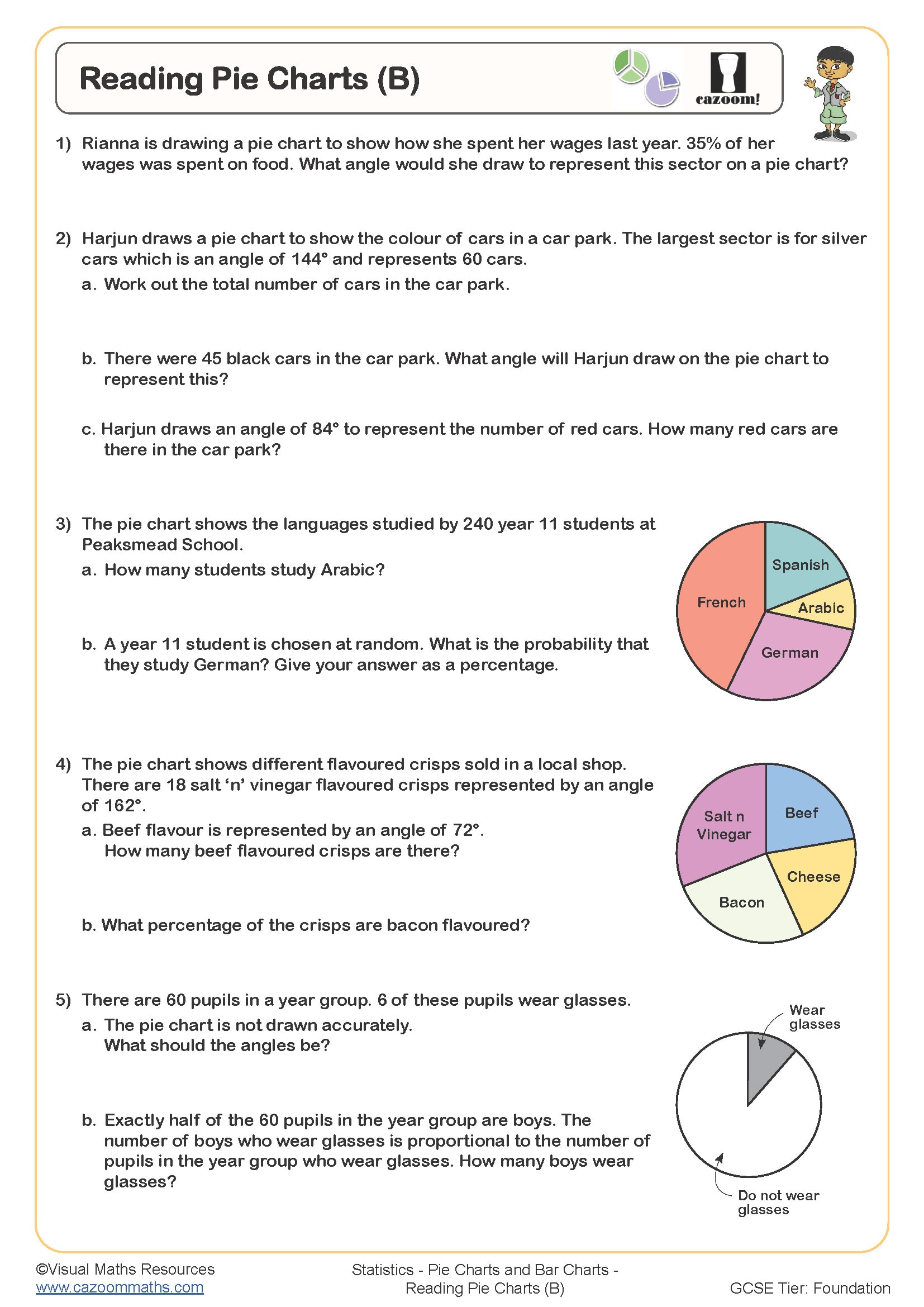
Choosing the Best Representation
Year groups: 8, 9
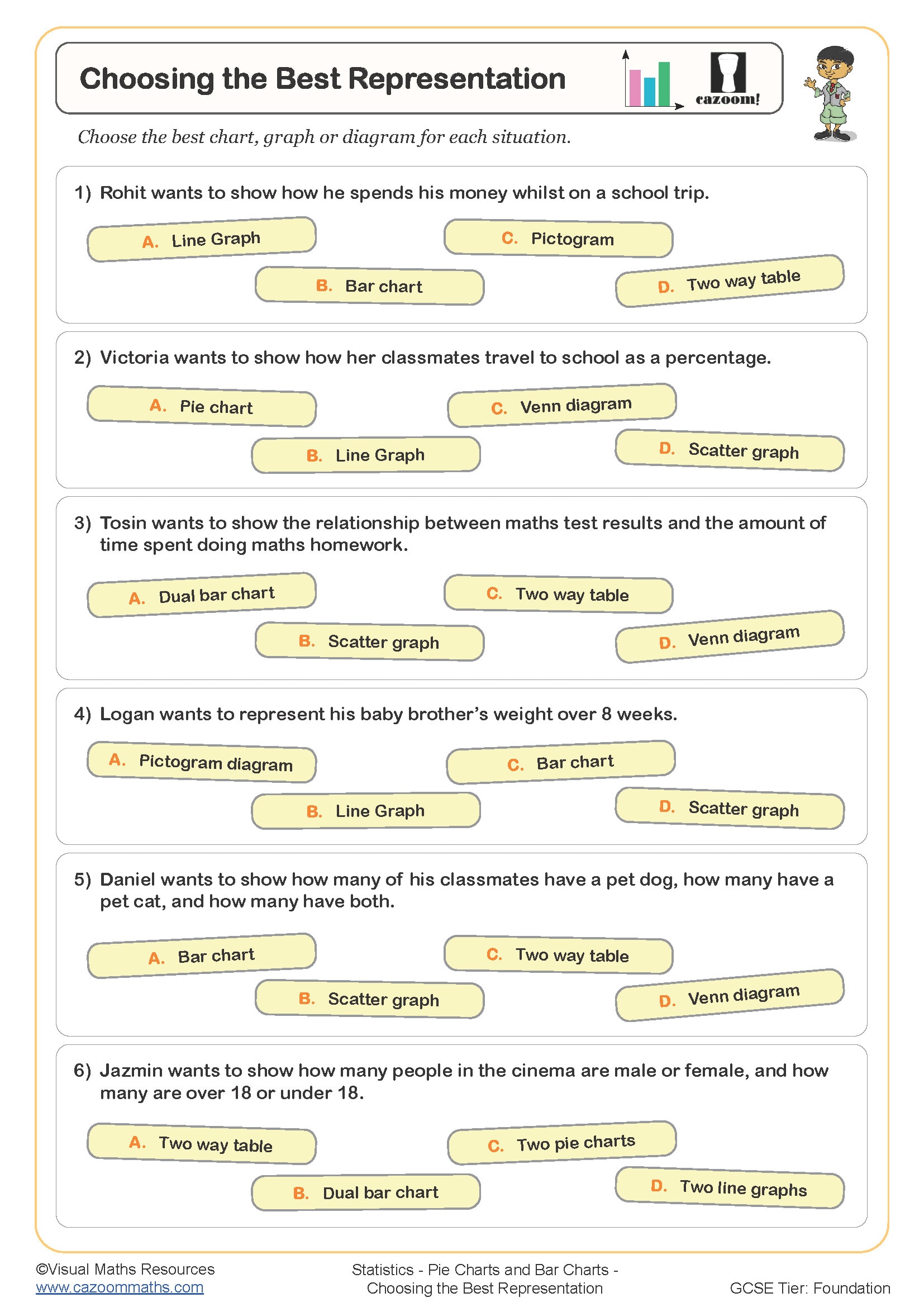
Draw Time Series Graphs
Year groups: 9, 10
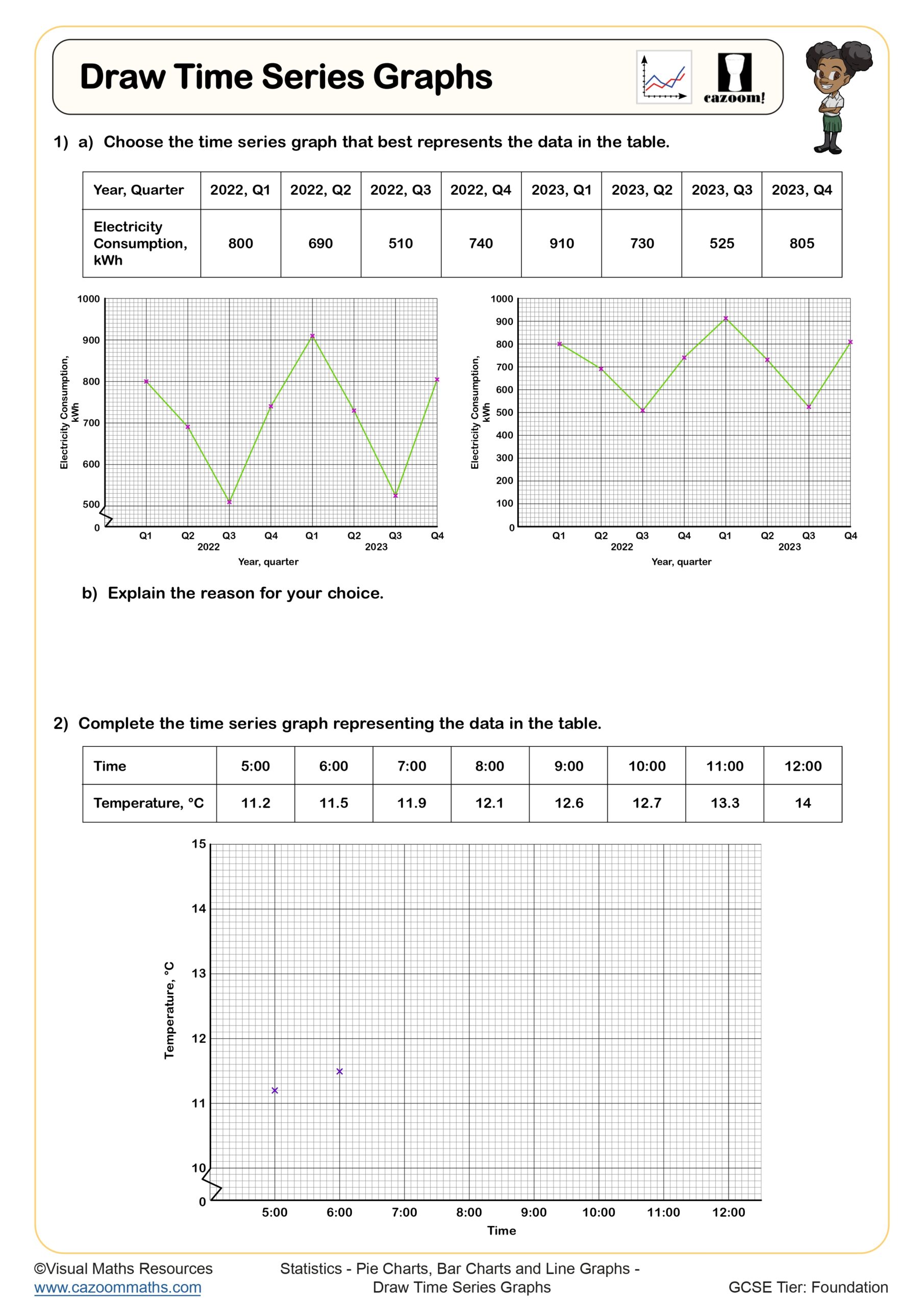
Printable Worksheets for Charts and Graphs with Answers
Download our printable PDF pie charts, bar charts and line graphs worksheets with answers right now! These statistical questions will give your pupils the resources they need to interpret data correctly with confidence. Our worksheets are well-structured and carefully designed by our maths experts to support step-by-step learning. Your children will be able to practise a variety of topics like—Completing Tables from Pie Charts, Criticising Graphs and Charts, Drawing Bar Charts from Frequency Tables, and much more. Therefore, these resources are perfect for teachers, tutors, and parents supporting KS3 and GCSE learners.
What Are Pie Charts, Bar Charts and Line Graphs?
Pie charts, bar charts, and line graphs are important for showing and understanding statistical information. Pie charts represent parts of a whole using sections of a circle, whereas bar charts compare amounts with rectangular bars, making it easy to see differences between groups. On the other hand, line graphs track changes over time by connecting data points with lines. Hence, these graphs are important concepts in maths and science as they help your pupils spot patterns and trends in data. Learning and understanding how to read and draw these charts helps your students build important skills they will use in real-life situations.
Why Learn About Charts and Graphs?
Understanding statistical charts and graphs is a core part of the Year 7 to Year 10 and GCSE maths curriculum. Your children are therefore expected to work with a range of data presentations and use them to solve a wide range of problems. Being able to read and interpret graphs will also help in other subjects like geography, science, as well as business studies. All our maths worksheets offer much-needed practice to help your young students understand the purpose of each chart and how to use them correctly. With regular use, your pupils will be able to improve their problem-solving skills and feel more confident while working with data.
Real-Life Uses of Graphs and Data Representation
We can see different types of charts and graphs in everyday life. From weather forecasts and news reports to sports statistics, shopping trends, and surveys, all these areas use these charts and graphs. Hence, these skills are very useful beyond school, especially in careers involving data, communication, and decision-making. By practising through our maths worksheets, your students will gain hands-on experience with real-life data and learn how to present information clearly and correctly. Therefore, understanding the basic concept of pie charts, bar charts, and line graphs will not only help in exams but also prepare them for using data in practical situations in future.